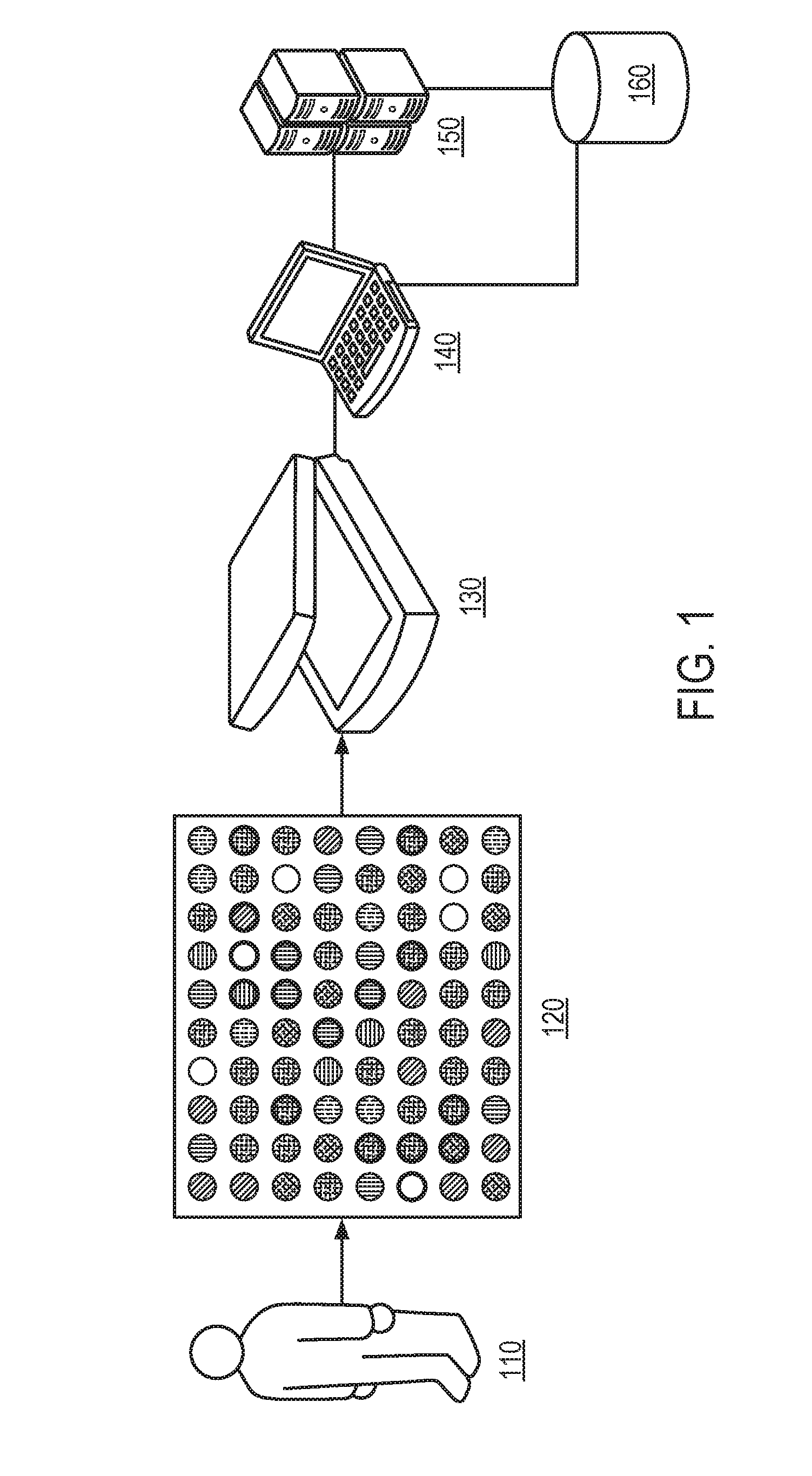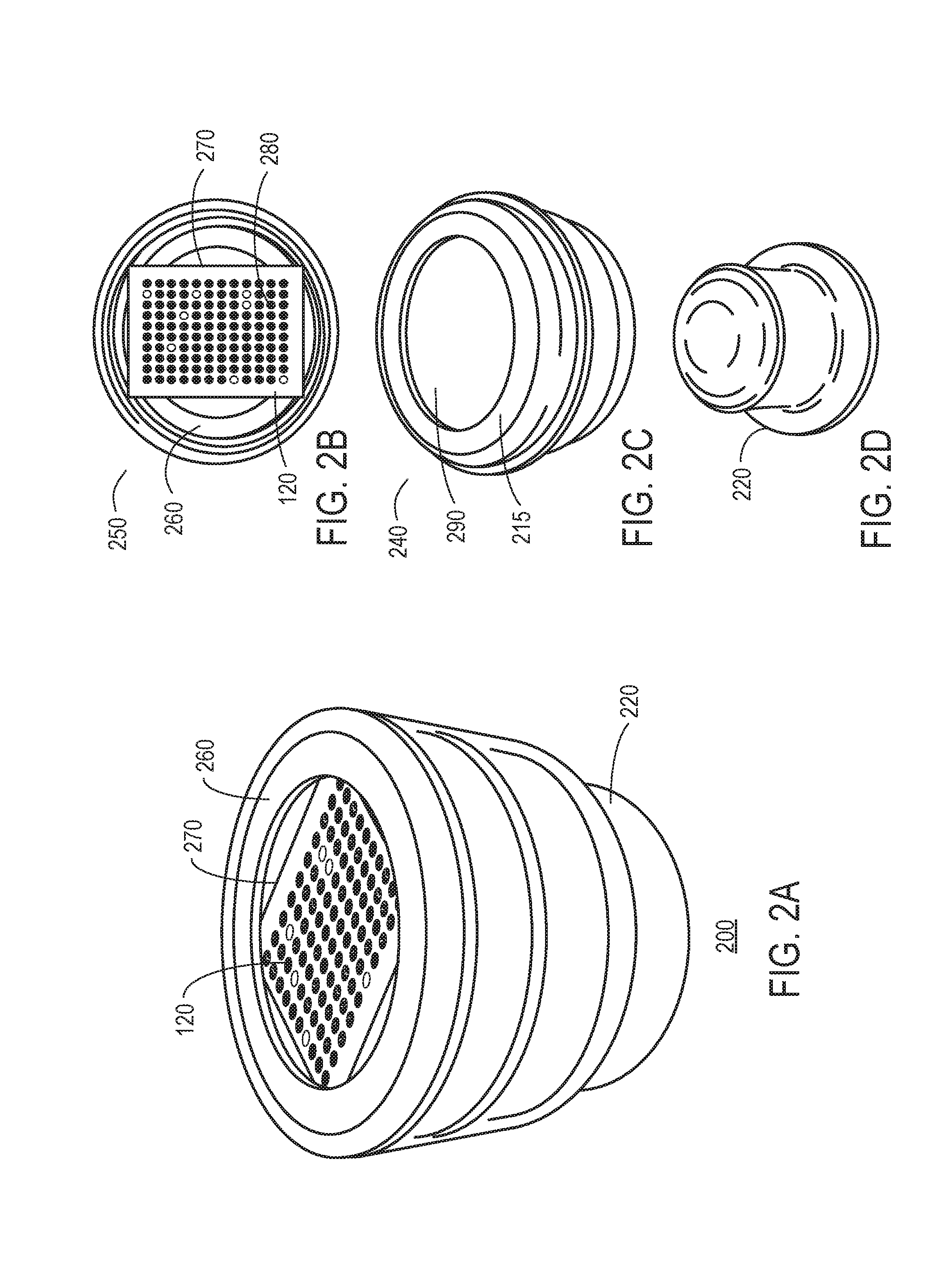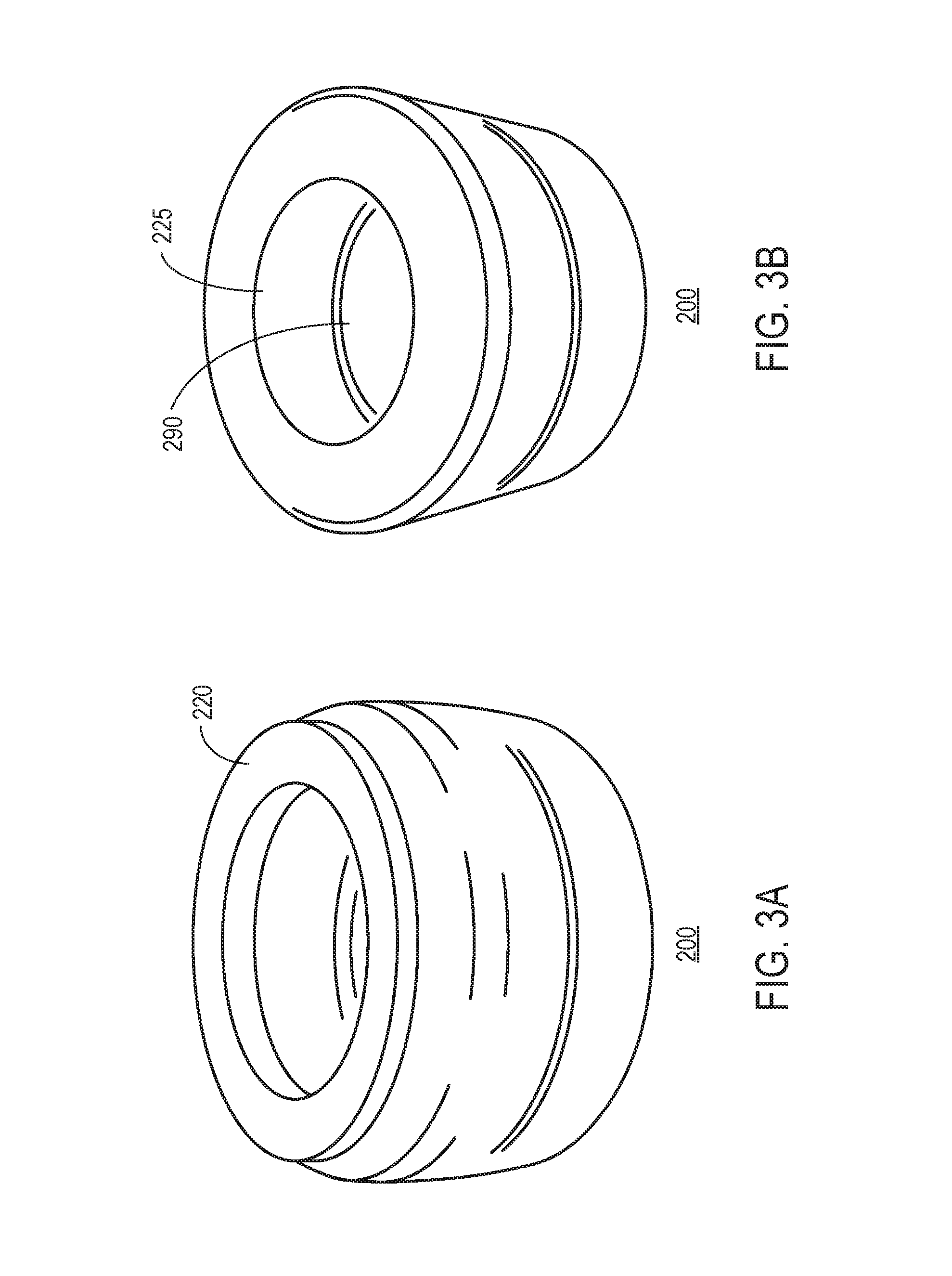Cancer urine test
a urine test and cancer technology, applied in the field of urine screening for cancer, can solve the problems of high mortality rate of lung cancer, ineffective screening test, high cost, etc., and achieve the effects of reducing the risk of lung cancer, and improving the quality of li
- Summary
- Abstract
- Description
- Claims
- Application Information
AI Technical Summary
Benefits of technology
Problems solved by technology
Method used
Image
Examples
example
[0120]In order to determine whether any of these or other volatile organic compounds can be detected using a colorimetric sensor array 120 in order to detect or diagnose lung cancer, the following experiment was conducted.[0121]Methods
[0122]149 urine samples were collected included 43 controls and 57 cancer urine samples with adenocarcinoma (34) and squamous cell carcinoma (18). Additionally, five cancer subjects with histology other than adenocarcinoma and squamous cell were also included in order to establish the capability to overall distinguish cancer vs. control. Additional clinical information, such as age, gender, smoking history and COPD, was provided, and included in the analysis. Summary of subject demographics is given in Table 4. There were 49 additional urine samples collected from patients with indeterminate nodules, but they were excluded from this preliminary analysis.[0123]Urine Assay Methods
[0124]Each urine sample was divided into multiple aliquots of 1.5 mL and st...
PUM
 Login to View More
Login to View More Abstract
Description
Claims
Application Information
 Login to View More
Login to View More - R&D
- Intellectual Property
- Life Sciences
- Materials
- Tech Scout
- Unparalleled Data Quality
- Higher Quality Content
- 60% Fewer Hallucinations
Browse by: Latest US Patents, China's latest patents, Technical Efficacy Thesaurus, Application Domain, Technology Topic, Popular Technical Reports.
© 2025 PatSnap. All rights reserved.Legal|Privacy policy|Modern Slavery Act Transparency Statement|Sitemap|About US| Contact US: help@patsnap.com



